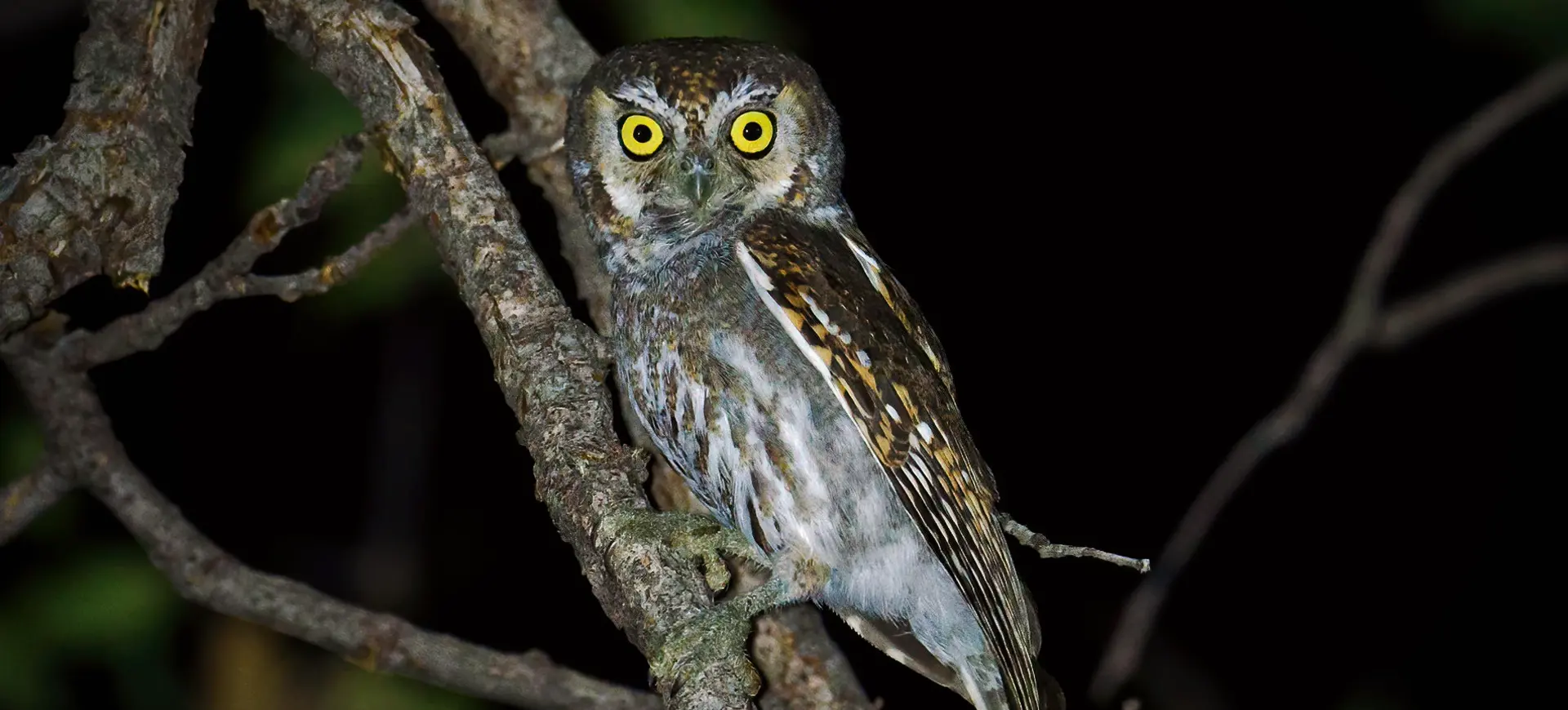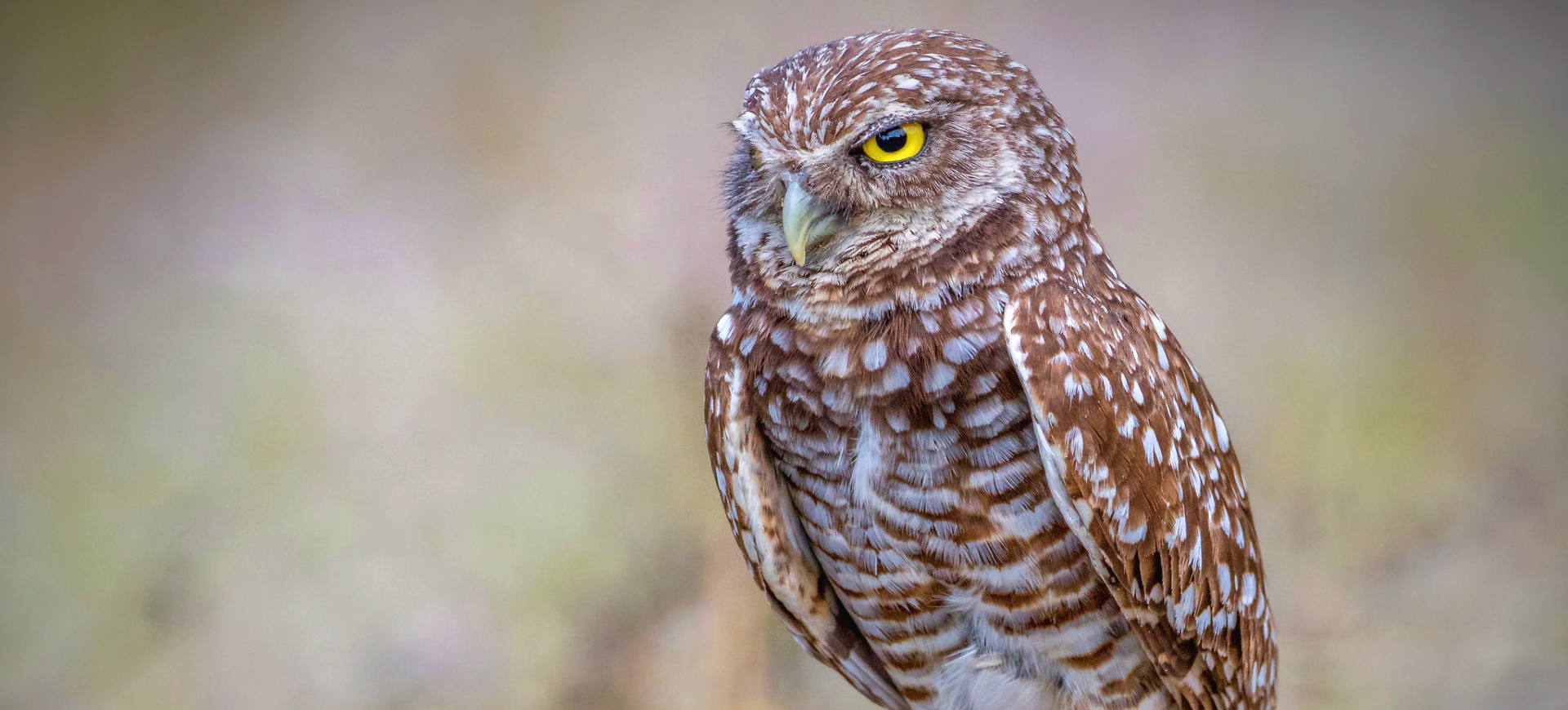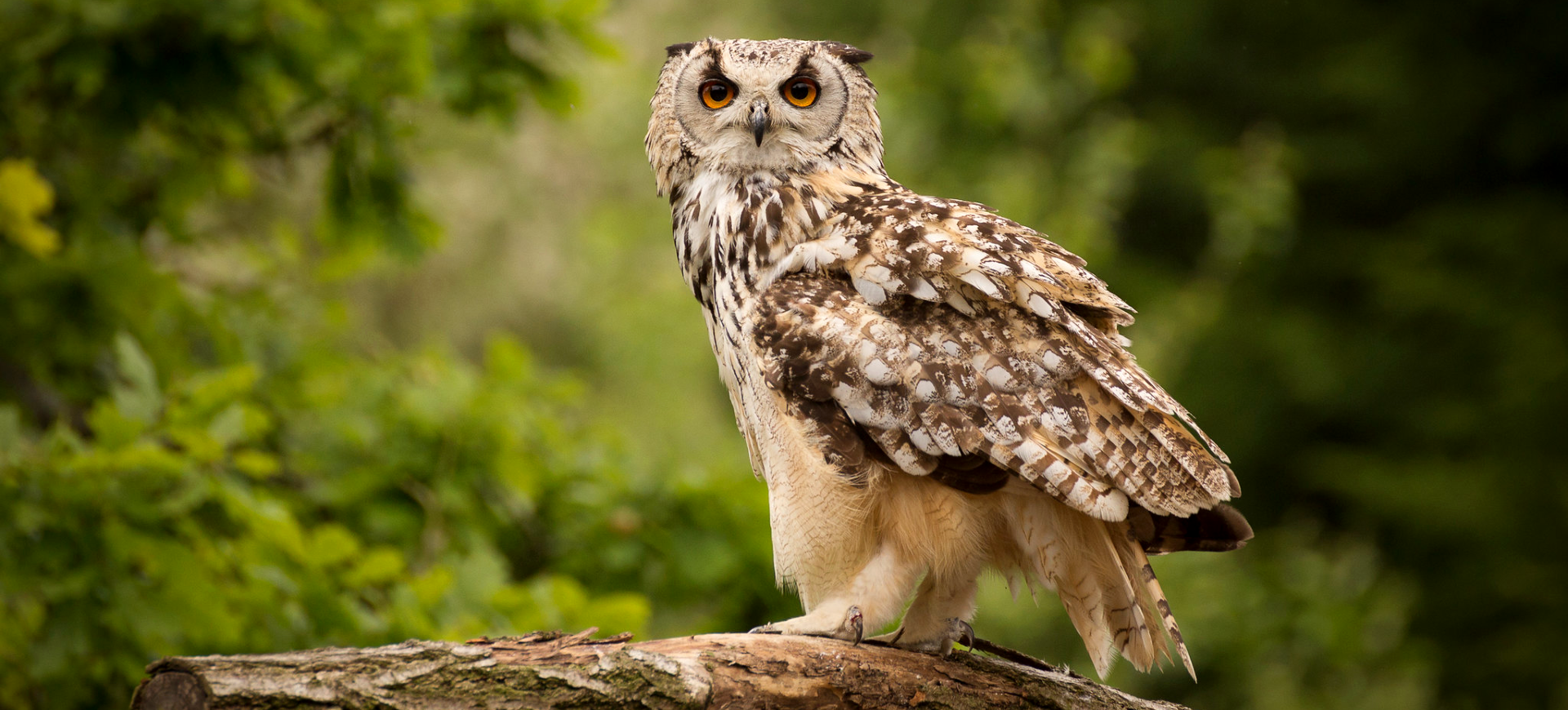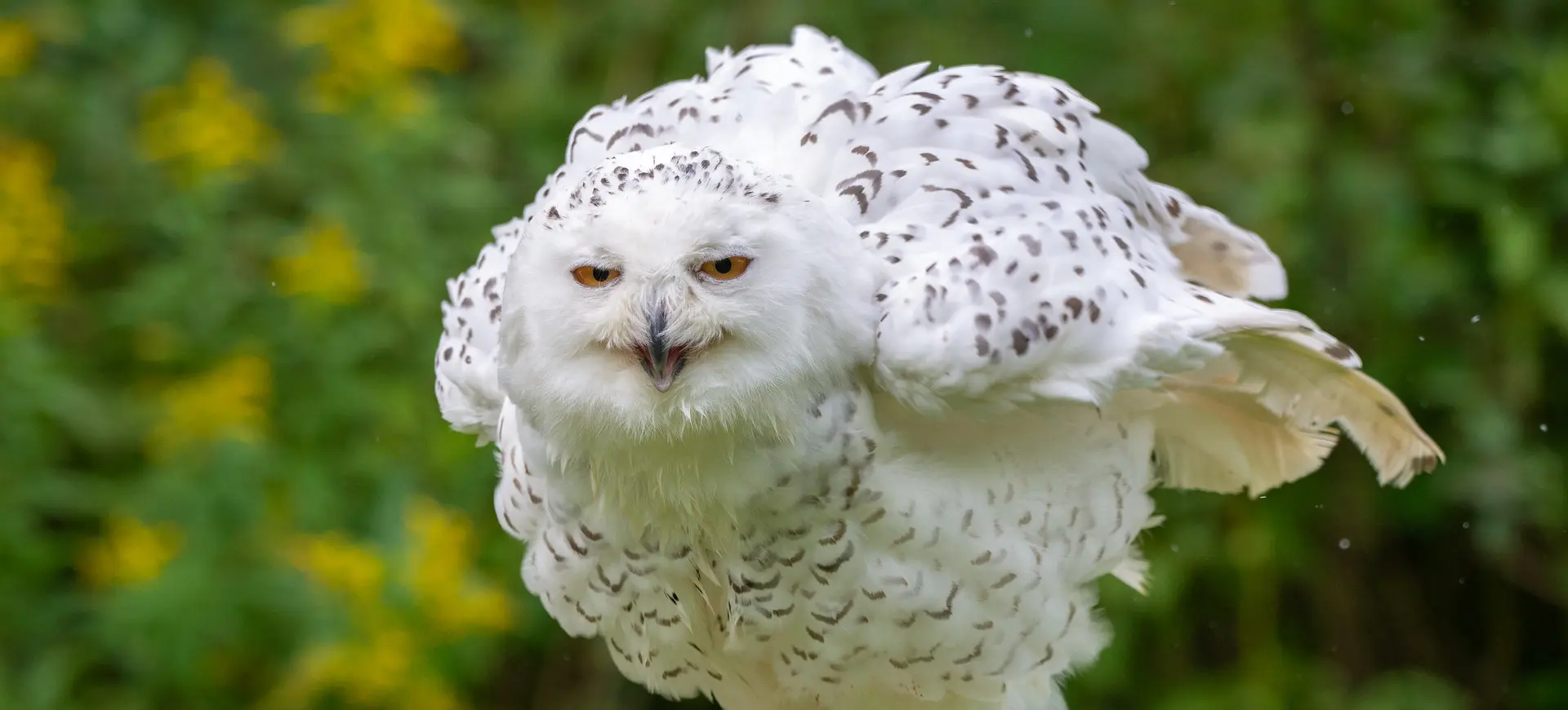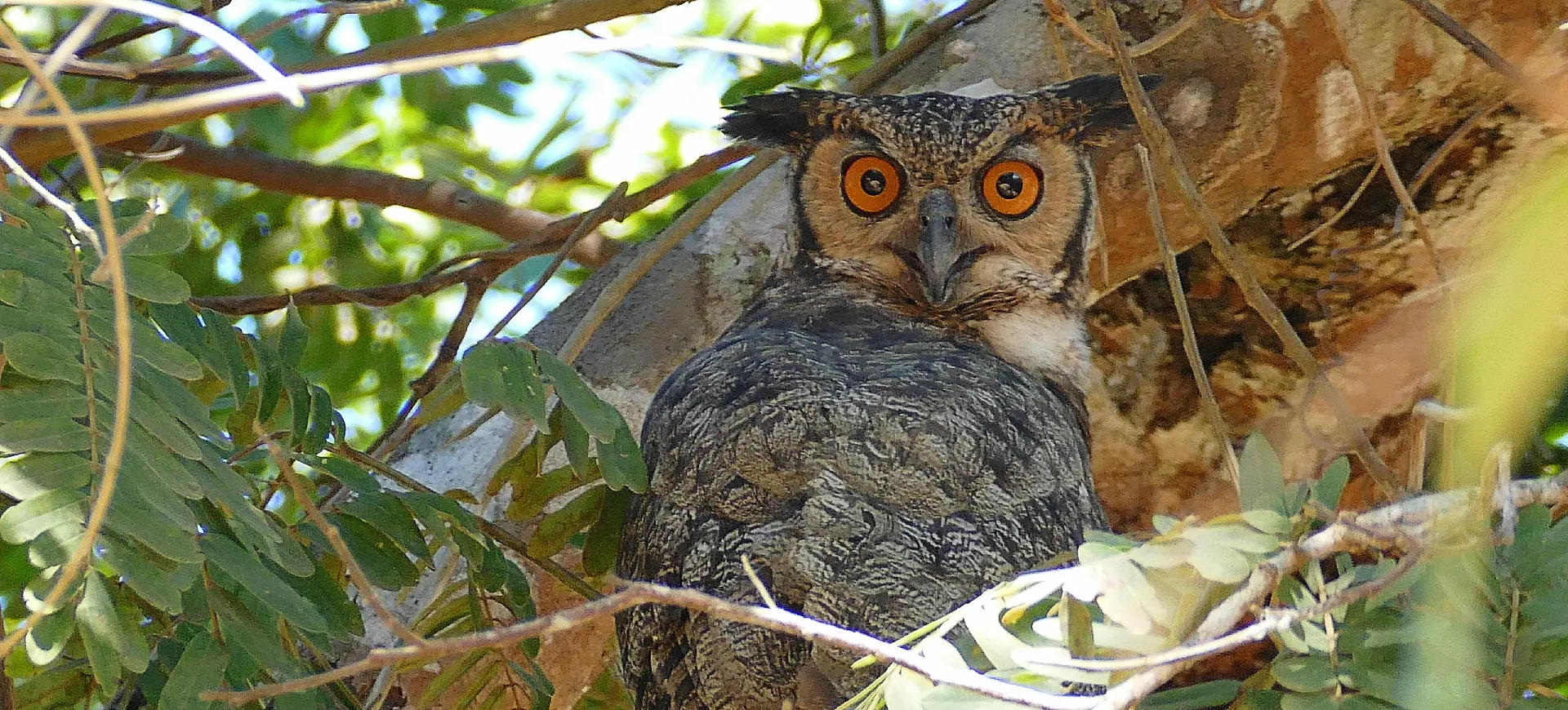Overview
The Eastern Screech-Owl (Megascops asio) is a small, nocturnal bird of prey found throughout eastern North America. This species is notable for its distinctive “screeching” call, contributing to the nighttime chorus in wooded areas and suburban neighborhoods. The Eastern Screech-Owl exhibits two primary color morphs: a gray phase and a rufous, or red, phase, allowing it to blend seamlessly into its environment, whether it be the bark of a tree or the shadows of the night.
Despite its small size, typically 6.3 to 9.8 inches in length, the Eastern Screech-Owl is a formidable predator, feeding on a wide range of prey, from insects and small rodents to birds and amphibians. They are cavity nesters, often taking over abandoned woodpecker holes or utilizing nest boxes in more urban areas. These owls are year-round residents in their range, with pairs forming strong bonds and often reusing the same nesting sites year after year.
The Eastern Screech-Owl’s adaptability to diverse habitats, including forests, suburban parks, and residential areas, highlights its resilience. However, the owl faces threats from habitat loss, vehicle collisions, and competition for nesting sites.
Taxonomy
Kingdom
Phylum
Class
Order
Family
Genus
Species
Sub Species
Type
Physical Description:
Eastern Screech-Owls are compact owls with a large head and almost no neck visible. They feature prominent ear tufts, contributing to their expressive appearance and aiding in camouflage by mimicking the silhouette of broken tree branches. Their plumage can vary significantly, with individuals displaying either primarily gray or reddish-brown (rufous) colors, allowing them to blend into their surroundings effectively.
Their eyes are large and yellow, offering excellent night vision, and their beak is short, hooked, and powerful, designed for grasping and consuming prey. Adults typically weigh between 4.3 to 8.6 ounces, with a wingspan ranging from 18 to 24 inches. The plumage of males and females is similar in both color morphs, making them difficult to distinguish based on appearance alone.

Lifespan: Wild: ~8 Years || Captivity: ~13 Years

Weight: Male & Female: 4.3-8.6 ounces (121-244 g)

Length: Male & Female: 6.3-9.8 inches (16-25 cm)

Height: Male & Female: 6-7 inches (15-18 cm)

Wingspan: Male & Female: 18-24 inches (46-61 cm)
Characteristic:
Native Habitat:
Eastern screech owls are versatile in their habitat preferences, occupying a range of environments from dense forests to mixed woodlands and suburban parks. They require areas with suitable nesting cavities, either natural or man-made, and abundant prey. The presence of water bodies, which support a diverse ecosystem, can also enhance their habitat.
Their adaptability to human presence has allowed them to thrive in suburban and even urban settings; provided there are enough trees and green spaces to support their nesting and feeding needs.
Climate Zones:
Biomes:
Biogeographical Realms:
Continents:
Countries:
Diet:
Diet & Feeding Habits:
The Eastern screech owl is an opportunistic feeder, preying on various organisms. Its diet includes insects and small mammals like mice and voles, birds, earthworms, and amphibians. This owl hunts primarily from dusk to dawn, utilizing its excellent hearing and night vision to locate prey.
They often perch quietly before swooping down on their prey, catching it with their sharp talons. In urban and suburban areas, they may also prey on insects attracted to artificial lights. The adaptability of their diet is a key factor in their success across varied environments.
Mating Behavior:
Mating Description:
Eastern screech owls are monogamous, with pairs often bonding for life. They engage in various courtship behaviors, including duet calls, mutual preening, and the male providing food for the female. Nesting typically occurs in tree cavities, natural or abandoned by other species, with some pairs also utilizing specially designed nest boxes.
The female lays 2 to 6 eggs per clutch, which she incubates for about 26 days. Both parents participate in feeding the altricial chicks, which remain in the nest for up to 31 days before fledging. The extended parental care ensures the young owls are well-prepared for independence.
Reproduction Season:
Birth Type:
Pregnancy Duration:
Female Name:
Male Name:
Baby Name:
Social Structure Description:
Eastern screech owls are generally solitary or found in pairs, especially during the breeding season. They are territorial, with pairs defending their nesting area against intruders. Outside of breeding, they may roost in small groups during the colder months. Their social interactions are primarily characterized by vocalizations used for communication between mates, signaling territory, and warning of predators.
Understanding the behavior and social dynamics of Eastern Screech-Owls, including their territoriality, mating strategies, and vocal communication, provides valuable insights into their ecology and the conservation challenges they face.
Groups:
Conservation Status:
Population Trend:
The Eastern screech owl is widespread and relatively common within its range, but like many species, it faces threats from habitat loss, pollution, and collisions with vehicles. Their adaptability to urban environments has provided new opportunities for population support, including using nest boxes, which have become popular tools for conservationists and bird enthusiasts.
Conservation efforts aim to preserve natural habitats, promote the installation of nest boxes, and raise public awareness about the species and its needs, particularly in urban and suburban settings where human-wildlife interactions are frequent.
Population Threats:
The main threats to Eastern Screech-Owls include habitat loss due to urbanization and deforestation, which reduces available nesting sites and prey abundance. Collisions with vehicles are a significant mortality factor, particularly for young owls learning to fly. Competition for nesting sites with other cavity-nesting birds and predation by larger raptors also pose challenges.
Pesticide use can reduce the availability of insect prey, impacting their diet and reproductive success. Addressing these threats through habitat conservation, pollution reduction, and public education is essential for the long-term viability of Eastern Screech-Owl populations.
Conservation Efforts:
Conservation initiatives for the Eastern Screech-Owl focus on habitat preservation and restoration, including protecting wooded areas and encouraging native vegetation in urban and suburban settings. Installing nest boxes has proven to be an effective strategy for supporting populations, especially in areas where natural cavities are scarce.
Public education campaigns aim to raise awareness about the species, its role in the ecosystem, and the challenges it faces, promoting coexistence and conservation actions. Research and monitoring are ongoing to better understand their population dynamics, habitat requirements, and threats, informing targeted conservation strategies.
Additional Resources:
Fun Facts
- The Eastern Screech-Owl’s ability to blend into its surroundings makes it a master of camouflage, often remaining undetected even when nearby.
- Their “screech” is one of many sounds; their calls also include soft trills and whinnies.
- Eastern screech owls can rotate their heads up to 270 degrees, a trait common to many owl species, which aids in their hunting and surveillance.
- Despite their name, Eastern Screech-Owls do not exclusively “screech”; their vocal repertoire is quite diverse and includes a range of sounds used for different purposes.
- They play a vital role in controlling rodent and insect populations, contributing to the health of their ecosystems.
- The Eastern Screech-Owl’s color morphs (gray and red) occur randomly, and neither color offers an advantage in camouflage or survival, making each unique.
- Eastern Screech-Owls are among the most common owls in Eastern North America, yet their nocturnal habits and camouflage make them less frequently seen than heard.
- Conservation efforts for Eastern Screech-Owls also benefit other cavity-nesting birds and species that share their habitat, underscoring the interconnectedness of ecosystem conservation.
- Homeowners and nature enthusiasts’ installation of nest boxes has helped boost local populations, demonstrating the positive impact of human support for wildlife conservation.
- The presence of Eastern Screech-Owls is often considered a sign of a healthy, biodiverse environment, making them an important species for ecological monitoring and conservation efforts.









